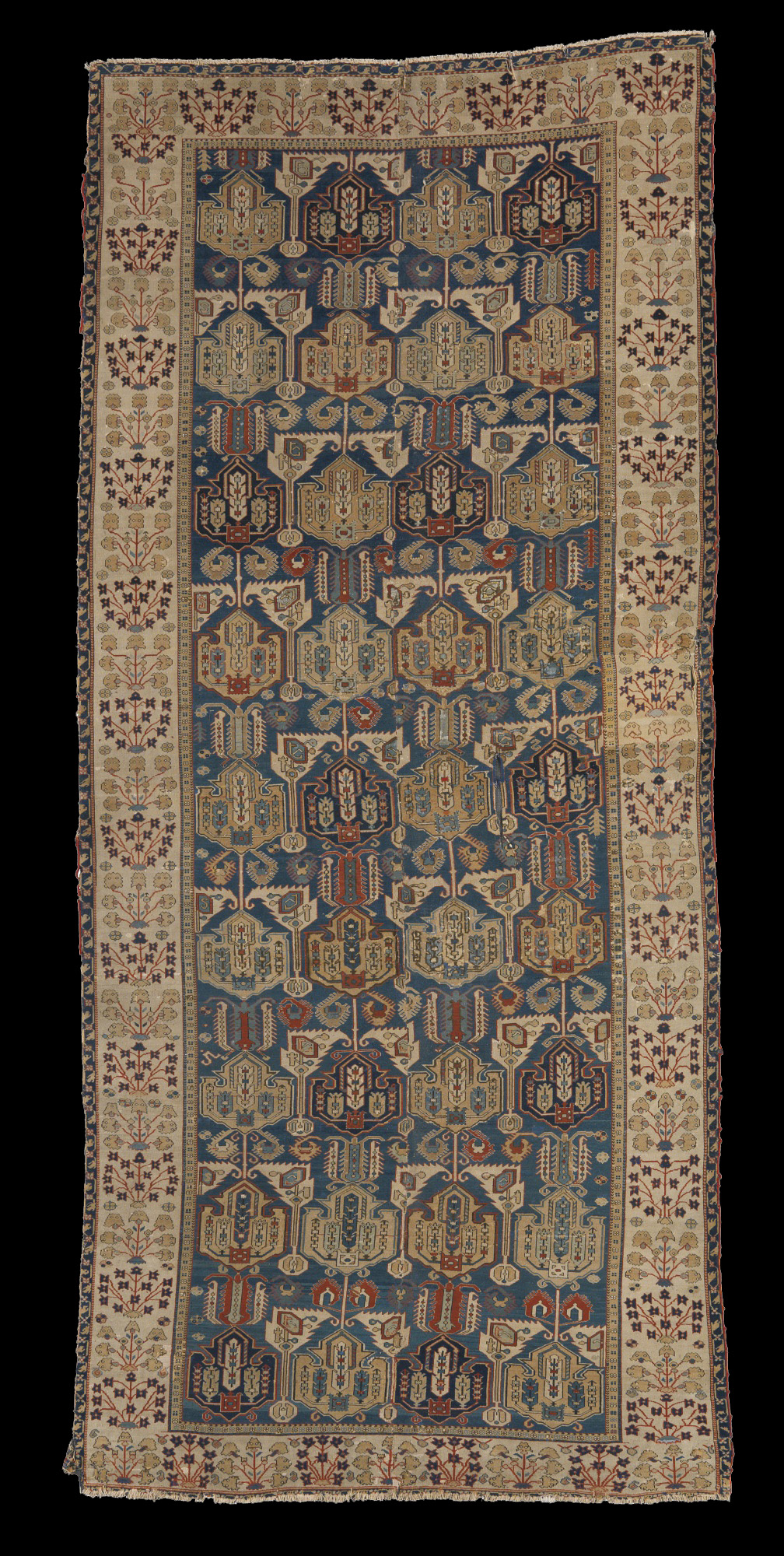|
Shirvan carpet, 18th century.
Hollitscher Collection
Sotheby's European Decorative
Arts from Caramoor Center for Music
and the Arts
New York | 12 Apr
2016, 10:00 AM | N09464
LOT 177
A CAUCASIAN 'SHIELD'
CARPET
silk wefts, cut and rejoined
approximately 15 ft. 3 in. by 6
ft. 9 in.: 4.65 by 2.06 m.
18TH CENTURY
ESTIMATE 80,000-120,000 USD
PROVENANCE
Hollitscher
Collection, Berlin
LITERATURE
Robert Pinner and
Michael Franses, "Caucasian Shield Carpets," Hali, vol. 1, no. 1, fig. 10,
p. 8.
Kurt Erdmann, Der Orientalische Knüpfteppich, Tübingen, 1955, pl.
116.
CATALOGUE NOTE
‘Shield’ carpets, such as the lot offered here,
have long been revered by collectors and scholars as rare and
sophisticated weavings from the Caucasus. As such rare, intriguing, and
aesthetically outstanding pieces, these rugs
were the subject of choice
for a thorough discussion in the inaugural issue of Hali magazine, see
Pinner, Robert and
Michael Franses, “Caucasian Shield Carpets,” Hali,
vol. 1, no. 1, pp. 4-22. ‘Shield’ carpets were woven with silk in the
foundation and demonstrate an unusual grandeur of design for Caucasian
weavings. Unquestionably the works of
highly skilled weavers, they
maintain a vibrancy of coloring and stylization of design remaining
Caucasian in
sensibility. An attribution to a weaving center more
precise than Caucasian would be speculative as there are no
documents
to support specific towns or workshops. Regardless where exactly ‘shield’
carpets were woven, they are
products of workshops expected to meet the
highest demands. Dating ‘shield’ carpets continues to be controversial
among scholars. C. G. Ellis, Early Caucasian Rugs, Washington, D.C., 1975,
p. 96, believes all of the ‘shield’ carpets
to be from the 19th
century. F. Spuhler, Oriental Carpets in the Museum of Islamic Art,
Berlin, Washington, D.C.,
1987, dates some examples to the 19th
century, while Pinner and Franses, op. cit., suggest that the type of
‘shield’
carpet presented here was woven contemporaneously with Kuba
‘Afshan’ pattern carpets dating between 1790-1840.
Besides the
dominating shield design, which is believed to be derived from the ‘lotus
palmette’ or ‘Ottoman tulip’ motif,
the fields of these weavings also
incorporate numerous other elements including stylized flower heads and
cypress
trees, vinery, winged palmettes, serrated leaves, and sometimes
escutcheons.
The flowering shrub border of the present lot appears to
be unique among the corpus of known 'shield' carpets. Most
‘shield’
carpets have narrow borders exhibiting the ‘curled leaf’ motif. The
present carpet's border is unusual both
in its breadth and design,
creating a brilliant compliment to the scale and color of the field
pattern.
For related examples, see M.S. Dimand and Jean Mailey,
Oriental Rugs in the Metropolitan Museum of Art, New York,
Metropolitan
Museum of Art, 1973, p. 268, fig. 230.; Sotheby’s, London, October, 1985,
lot 646; Christie’s, London,
October, 2006, lot 24; and Sotheby's, New
York, December 14, 2006, lot 98.
|

